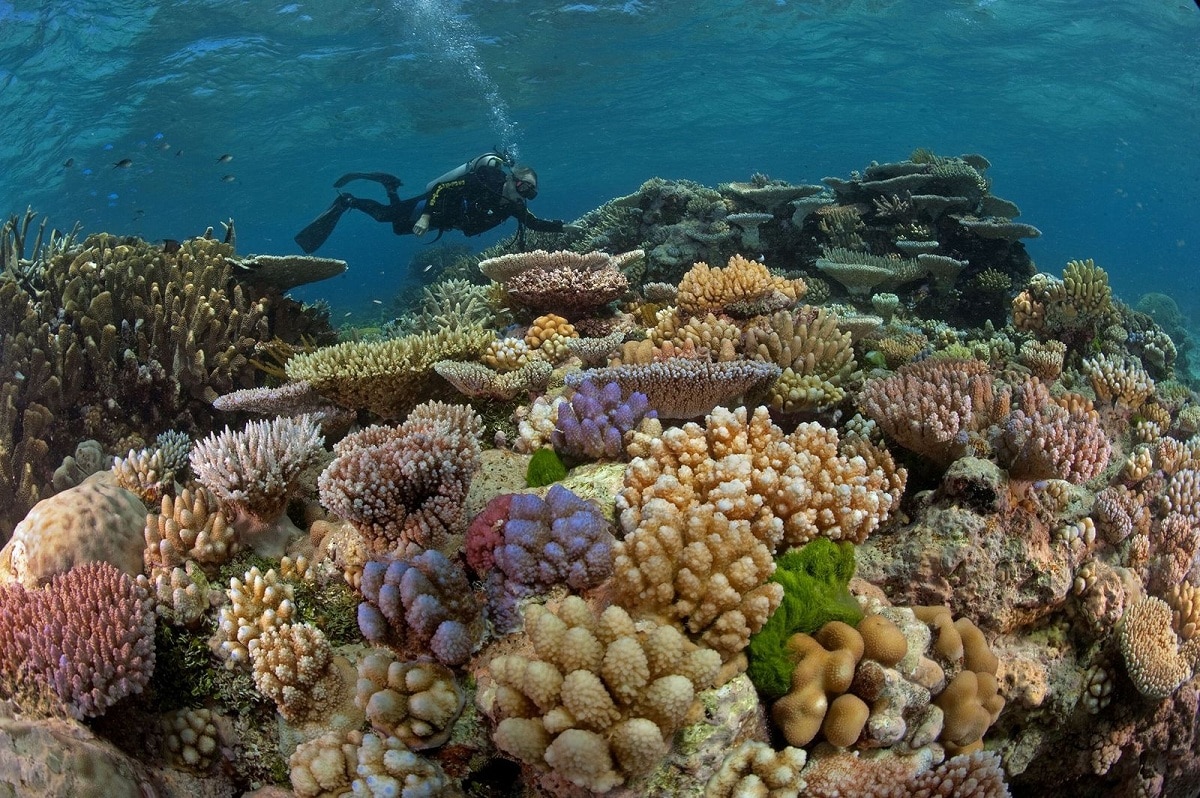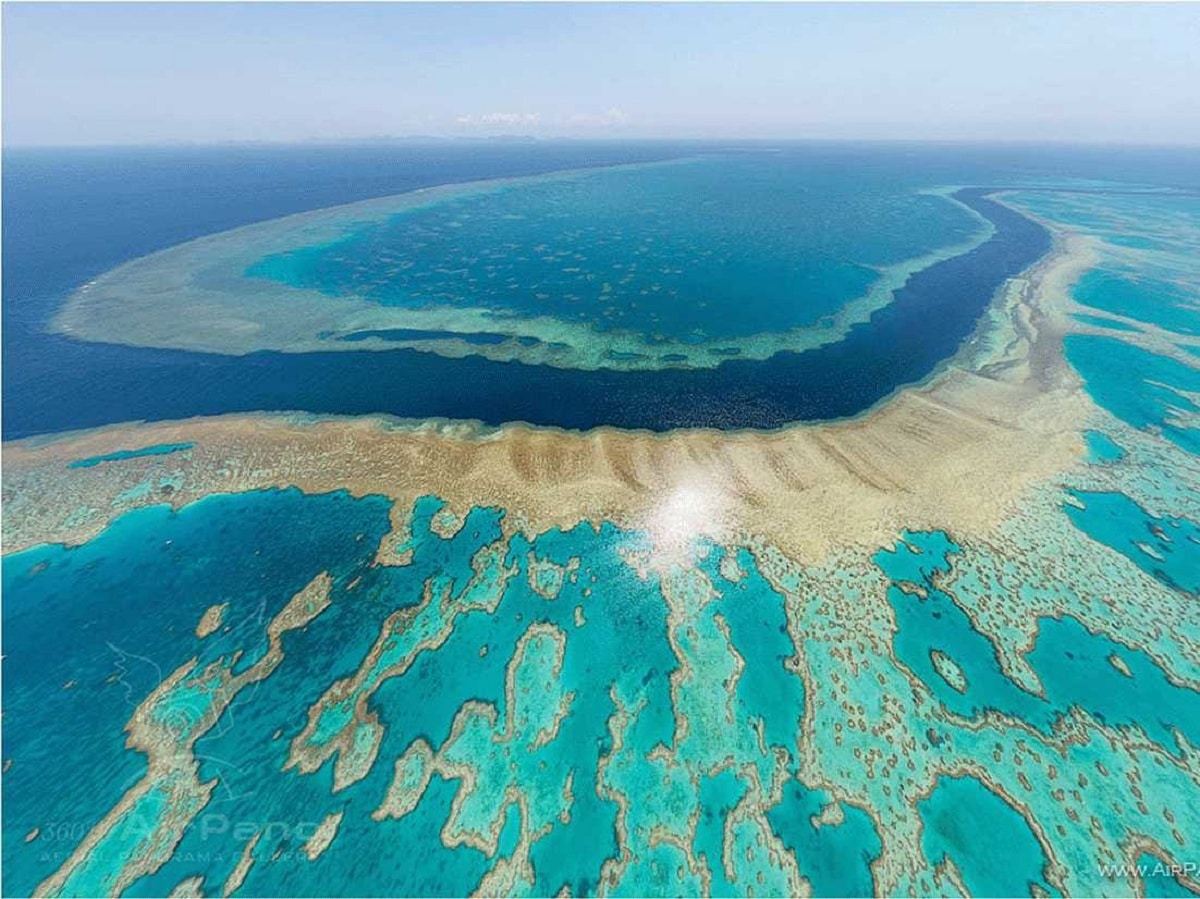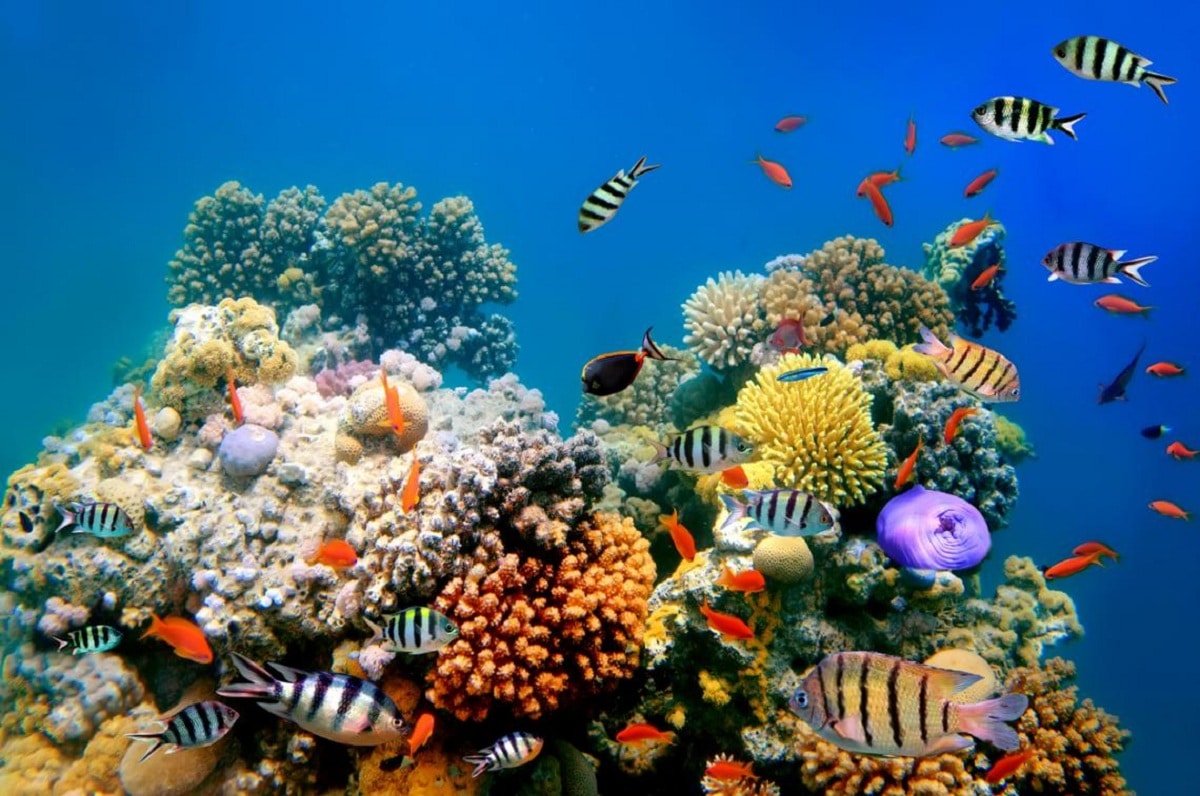
Today we are going to talk about a sea that contains many islands in its interior and that was located above all the largest coral reef system in the world. Its about coral sea. It is a sea that is part of the South Pacific Ocean and has an area of approximately 4.800.000 square kilometers. They are of great importance from the point of view of biodiversity conservation since there is the Great Barrier Reef, declared a World Heritage Site by UNESCO in 1981.
In this article we are going to tell you about all the characteristics, biodiversity and importance of the Coral Sea.
Key features

It is a type of sea that bathes the coasts of the following countries: Australia, New Caledonia (France), Papua New Guinea, the Solomon Islands and Vanuatu. Its name comes from containing within it numerous islands and the entire world's largest coral reef system. It is connected to the northwest with the Arafura Sea, through the Torres Strait. It is bordered by the Solomon Sea to the north, the Tasman Sea to the south and the open Pacific Ocean to the east.
It is a sea whose average depth is 2.394 meters, although at its deepest point it reaches 9.140 meters. This sea has a curiosity and it is that its main currents form a gyroscope in an anti-clockwise direction. This is due to the fact that its deepest point generates currents that are modified by the action of the Coriolis effect. The current system incorporates the East Australian Current. This current is responsible for transporting the warmer waters from the north to the Tasman Sea, which is generally colder. This contrast in temperatures is what causes it to have stronger currents. The current that carries the warmer cold water increases its intensity during the month of February and is weaker in the month of August.
Coral Sea Climate

The Coral Sea has an average annual temperature that varies according to the latitude in which we are. For example, in the southern part we have colder waters that are around 19 degrees. On the other hand we have the northern part, warmer waters with values around 24 degrees. It has a salinity index that will be around 34.5–35,5 ‰ (parts per thousand), so it is not too saline. And it is that the waters of the Coral Sea stand out because they have a high degree of sharpness, especially in the areas where coral reefs are found.
In the meteorology of this sea we find strong tropical cyclones that are quite frequent in it. These tropical cyclones are quite common and pose a threat to the population living on its coasts and to navigation. Tropical cyclones occur most frequently during the summer season.
Coral Sea Islands

As we have mentioned before, it is a sea that has many islands within it. Apart from the Great Barrier Reef we find important island groups. Its reefs and islands are particularly rich in biodiversity. Among them we find birds and a large amount of aquatic life. This wealth of biodiversity not only favors fishing activities, but they are also a popular tourist destination. It has numerous islands that are tourist destinations both nationally and internationally. Thanks to this, the economies of the countries around the Coral Sea can prosper well. Let's see which are the main islands of the Coral Sea:
They are located near the northeastern coast of Australia and are made up of about 30 islands and atolls and about 50 smaller islets. These islands are divided into different groups and are the following:
- Northwest Group, in which the most important territories are Osprey Reef, Lihou Reef and Willis Island.
- Mellish Reef, a reef located more than 300 kilometers off the Australian coast.
- Southeast Group, made up of reefs Frederick, Kenn, Saumarez, Wreck and Cato, where the highest point of these islands is located, just 6 meters above sea level.
- Southern group, formed by reefs Middleton and Elizabeth.
The Chesterfield Islands are in France and are located about 550 kilometers northwest of New Caledonia. There are 11 totally uninhabited islands whose extension is approximately 11 square kilometers. All the islets and coral reefs are quite scattered within a 120 × 70 kilometer rectangle. The islands located in this rectangle are given the following names:
- Isla Renard.
- Reefs batton.
- it fell Skeleton.
- Islands Chesterfield central.
- Islotes Avon.
- Ile Longue.
- Islets of Mooring.
- Islotes Anchorage.
- Islet Wolf.
- Reefs Bellona.
Importance of coral reefs
We know that coral reefs are like marine rainforests that come in different shapes, sizes, and colors. And it is that they are colonies of thousands of small animals that are essential for the survival of hundreds of millions of other people and that accounts for 25% of the world's marine fauna. In these reefs you will find small fish and mollusks and turtles, water birds and sharks. These ecosystems are quite fragile and their survival is at risk due to the consequences of global warming.
Coral reefs not only provide shelter and food for a percentage of the world's marine fauna, but are also a tourist attraction that generates multimillion dollar revenues. From an ecological point of view, it protects us from floods, tsunamis and contributes to food security through fishing. We should also know that numerous anticancer drugs are extracted from coral reefs.
We must know that they are the natural habitat of numerous endangered species such as marine feathers, anemones, gorgonians, among others. The UNEP report also highlights the importance of corals for the economies of Mesoamerica and Indonesia, two regions that More than $ 34.000 billion each could be pocketed between now and 2030 if we improve reef health.
I hope that with this information you can learn more about the Coral Sea and its characteristics.